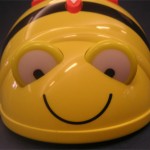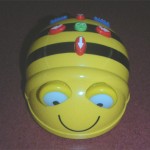Destination Imagination is a program in which your team works together and solves a challenge that they are required to do. It is a creative educational program that encourages “three life-long values: creativity, teamwork, and problem solving.”* Every year there is a tournament that includes 125,000 students from more than 30 countries, teams have to think in a set period of time and present their performance to the judges. Not only do they learn basic knowledge they get to unleash their imagination to a higher level. Destination Imagination is from kindergarden to university levels and teams are from 2-7 people. There are five age levels in D.I. the first one is Rising Stars it is from (ages 4 to 7), the next age level is Elementary its from (3rd to 5th grade), Middle is the next group it is from (6th to 8th grade), the next group is Secondary and is from (9th to 12th grade), the final age group is University and is (University level). Teams compete in 1 of 7 challenges, which they have weeks to months to solve. This year’s challenges are:
that encourages “three life-long values: creativity, teamwork, and problem solving.”* Every year there is a tournament that includes 125,000 students from more than 30 countries, teams have to think in a set period of time and present their performance to the judges. Not only do they learn basic knowledge they get to unleash their imagination to a higher level. Destination Imagination is from kindergarden to university levels and teams are from 2-7 people. There are five age levels in D.I. the first one is Rising Stars it is from (ages 4 to 7), the next age level is Elementary its from (3rd to 5th grade), Middle is the next group it is from (6th to 8th grade), the next group is Secondary and is from (9th to 12th grade), the final age group is University and is (University level). Teams compete in 1 of 7 challenges, which they have weeks to months to solve. This year’s challenges are:
- “Assembly Required” which is technical – design and build equipment that retrieves parts and delivers products
- “The Solar Stage” which is scientific – Create and present a theatrical performance that tells a story about the use of solar energy.
- “Coming Attractions” which is fine arts – Present a movie trailer involving characters from at least to nations.
- “News To Me” which is improvisational – learn about different types of news stories.
- “Hold It” which is structural – design build and test and a structure made entirely out of wood and glue to hold a weight and contain tournament provided golf balls.
- “The World Canvas” which is project – use creative problem solving tools to identify and select at least one real community need.
- “Built To Last” (Rising Stars Only, non-competitive) Learn about toys, and create a play about the last toy that will ever be made.
D.I.(Destination Imagination) was piloted last year in Chickering School. We talked with five students that did Destination ImageNation. The first question we asked was “What do you like best about Destination Imagination?” Two of the students liked making props and competing; another liked getting to know her strengths and weaknesses; another boy liked the instant challenges; and another girl liked making friends. This year Chickering School and our sister school Pine Hill in Sherborn will have six teams. Five of the teams will be doing “Coming Attractions” and the sixth team chose the “Solar Stage”. This year all students participating are in the fourth and fifth grade. We wish all the teams the best of luck in this year’s competition.
Reported by; Jay, Matthew S., and Riley
* www.IDODI.org copyright 2011 Destination ImagiNation, Inc. 21 November 2011.

